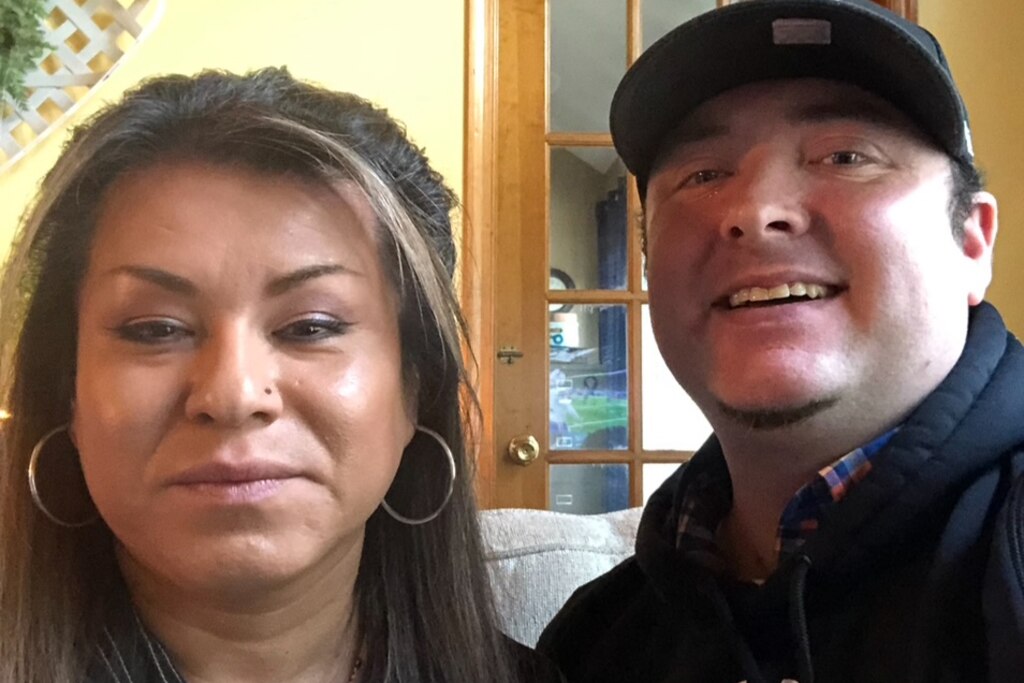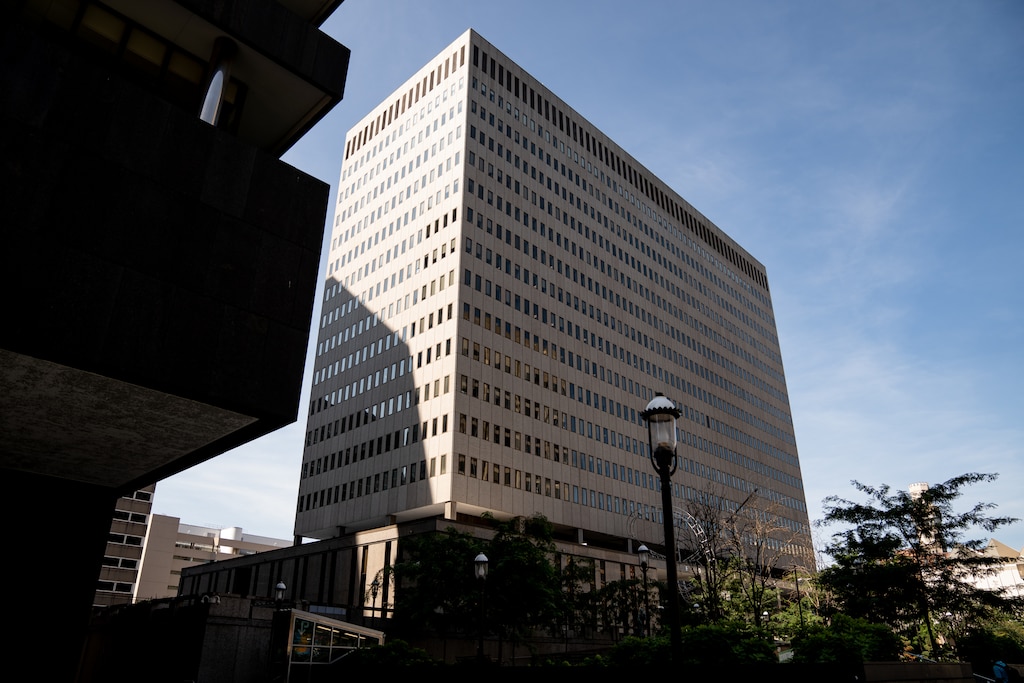When the Trump administration last month filed an unusual lawsuit against all federal judges in Maryland, it was another example of the state drawing fire from the president.
The dispute in Maryland began this spring when the chief judge of Maryland’s U.S. District Court ordered a 48-hour pause in every case in which an immigrant had tried to block deportation by challenging the legality of their detention. The Justice Department called the move an overreach and sued the entire bench.
The lawsuit, which is scheduled for a hearing Wednesday in Baltimore, comes as the administration in myriad ways has focused on Maryland for its immigration enforcement.
Robert Koulish, research professor and director of the undergraduate law programs at the University of Maryland, said he predicted early on that Maryland would be a target of the Trump administration because the state is overwhelming Democratic with political leaders who have been sharply critical of the White House’s aggressive approach to immigration.
“We have everything that the administration is looking to make an example of — it’s a state that will never be purple, or never turn red,” Koulish said.
The best known case may be that of Kilmar Abrego Garcia, the Salvadoran man improperly deported by the Trump administration despite a judge’s order. The White House has highlighted the cases of other Maryland immigrants, often calling them dangerous criminals in social media posts. In May, a viral video of federal Immigration and Customs Enforcement agents detaining a group of men in the Baltimore area was shared by President Trump and the White House.
Maryland has also seen a bigger surge in immigration-related arrests compared with the rest of the country.
Under Trump, average weekly ICE arrests in the state rose 165% through June of this year, compared to 2024, outpacing the 122% rise nationwide, according to a recent Baltimore Banner analysis of government data. Many of Maryland’s neighbors have experienced even steeper increases in ICE arrests. In Pennsylvania and West Virginia, weekly arrests have more than tripled under Trump. In Virginia, they have more than quadrupled.
Baltimore specifically has also attracted Trump’s criticism for other reasons, including his name-checking this week as part of a short list of Democratic-led cities he cast as crime-ridden.
In earlier cases, the president called out places like Los Angeles, where Trump deployed hundreds of Marines and federalized thousands of National Guard soldiers in early June to respond to protests against Immigration and Customs Enforcement.
Read More
Red, or more conservative-leaning states, haven’t been immune to the repercussions of Trump’s policies with increased immigration enforcement, but haven’t been singled out by name in a similar way.
Maryland has become “ground zero” for some of the Administration’s “most aggressive and legally questionable immigration tactics,” said Krish O’Mara Vignarajah, president and CEO of the Baltimore-based Global Refuge, which helps immigrants, refugees and asylum seekers.
“The message seems clear: There will be extreme pushback on jurisdictions like Maryland who welcome immigrants, defend their rights under the law, and hold the federal government accountable to its constitutional obligations,” she added.
In February, April Amaya-Luis, a Kent County transgender woman, caught the attention of the White House when it posted a picture of her on its X account as an example of alleged crimes committed by immigrants. The post misgendered her and accused her of sexual assault of a child, a claim disputed by her attorneys as baseless.
In May, the Trump administration declared Baltimore and more than a dozen other Maryland mostly blue towns and counties as “sanctuary jurisdictions.” The designation threw called into question federal money they could receive.
This followed White House Deputy Chief of Staff Stephen Miller sending letters in early January to mostly left-leaning county and city officials warning them to change their policies about immigration enforcement — or face consequences. City leaders have maintained Baltimore is not a so-called “sanctuary city” because it does not have control over its jail; the state does.

Maryland has also seen nearly 2,000 immigrants detained at Baltimore’s ICE holding room facility so far this year, triple the number in all of 2024, according to a recent Baltimore Banner data analysis. But in June, Department of Homeland Security Secretary Kristi Noem blamed the state’s 2021 law that shuttered longer-term ICE facilities inside Maryland for extended wait times at its controversial Baltimore facility.
For some, the increased attention by Trump and his administration on Maryland has been welcome news. The state’s House of Delegates Freedom Caucus lauded the president’s immigration policies for “keeping Maryland safe.”
The statewide caucus said earlier this summer that with “common-sense cooperation,” ICE will “ensure that violent criminals who are here illegally are removed from our communities. Marylanders overwhelmingly support this position across the political spectrum.”
In an interview, Del. Kathy Szeliga, a Baltimore County Republican and vice chair of the House of Delegates Freedom Caucus, said “Maryland’s soft-on-crime laws apparently make it a beacon for sex offenders as Maryland’s ICE is leading the nation in sex offender apprehensions and making our communities safer.”
She added that Baltimore has the second highest number of arrests of gang members in the country, following Los Angeles. Szeliga said she was quoting statistical information provided to her by a top ICE official in Baltimore. “I can’t understand why someone would fight against removing illegal immigrants convicted of sex offenses, especially pedophiles.”

An ICE spokeperson did not immediately respond to a request for comment.
A Baltimore Banner analysis of ICE data shows that since the president’s Jan. 20 inauguration, 60% of immigrants arrested in Maryland have never been convicted of crimes. Only 13% had committed violent crimes.
Jé St Sume, an assistant professor of political science at the University Maryland, Baltimore County, drew parallels between Maryland and California, which both endured Trump’s criticism because of their high-profile Democratic governors, like Maryland’s Wes Moore, who may be looking to succeed him.
“Trump is really interested in undermining or showing that he can stand up to them,” St Sume said.
There are few signs that pressure from the Trump administration will abate in the coming months.
“If recent weeks are any indication, we can expect the administration to continue testing the limits of executive power, whether through increased enforcement, attempts to withhold funding from so-called sanctuary cities, or efforts to fast-track deportations without court review,” Vignarajah said. “But I also believe we’ll see courts and communities push back just as forcefully to defend fundamental principles like due process and the rule of law.”
Baltimore Banner reporters Sapna Bansil and Daniel Zawodny contributed to this story.




Comments
Welcome to The Banner's subscriber-only commenting community. Please review our community guidelines.